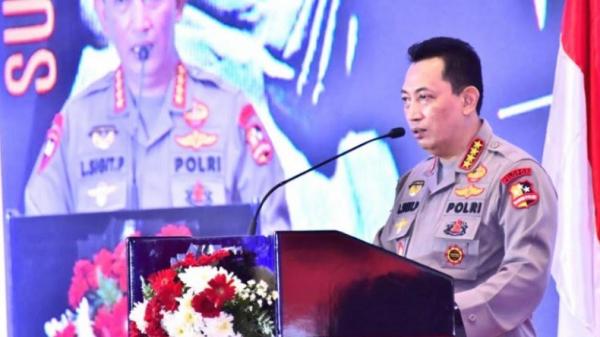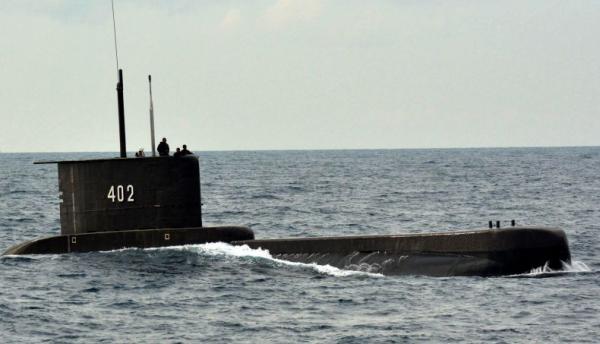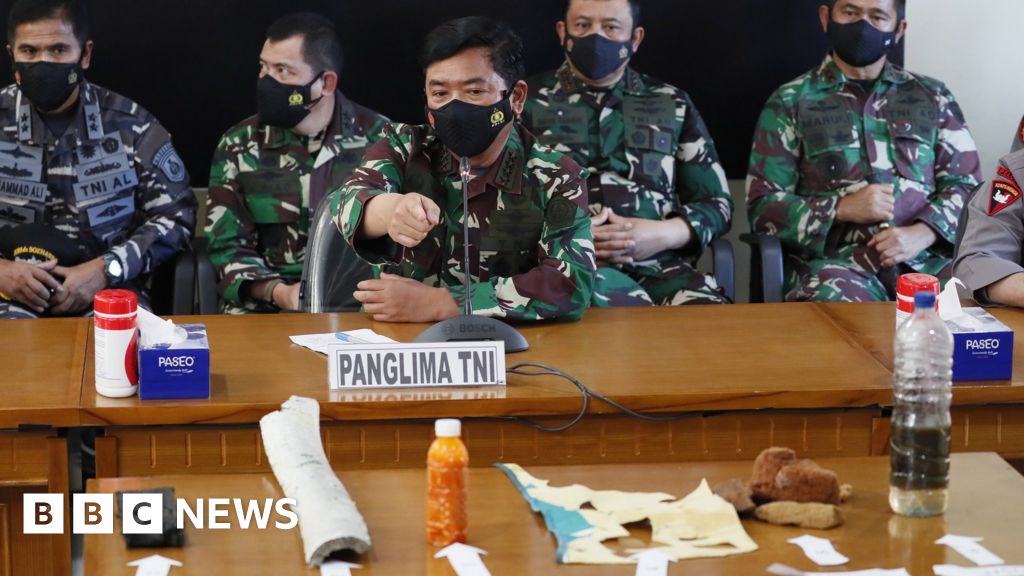Generally correct, yes; but submarines bottoming to avoid detection is a common tactic so most ASW sonars do have some competence in the area. MCM sonars have a real advantage for smaller objects but they have a more limited range. The best type of sonar to use for locating something on the bottom is a towed (at depth) side scan sonar, commonly used by hydrographic and other research ships. Those are active sonars; only ASW have passive capabilities so if you think the boat might be making noise they are the thing to use. However, in this situation airborne MAD (magnetic anomaly detection) is probably your best bet for searching a wide area.
Indonesia: 'green water navy'
- Thread starter Supe
- Start date
Unfortunately, I don't believe that they do. SG, and MY are the only ones I know of with that hardware and training. I'm glad to hear India has sent its vessel.This incident reinforces the vital need for navies with a sub capability to also have a rescue capability. Vietnam comes to mind; no idea if it has such a capability
Hoping for a safe return for those sailors to their loved ones.
Sandhi Yudha
Well-Known Member
Until this morning no any signs of KRI Nanggala 402.
The police now also plan to join the search for the submarine. They will send 4 boats and an unmanned underwater vehicle/remotely controlled underwater drone. I can not find that SRV-08M ROV, but i just wonder why the police needs to have a ROV that can reach 300 meter. Maybe in case a car drives into a channel or harbour and the police try to find it at 300 meter depth!

 www.inews.id
www.inews.id
The police now also plan to join the search for the submarine. They will send 4 boats and an unmanned underwater vehicle/remotely controlled underwater drone. I can not find that SRV-08M ROV, but i just wonder why the police needs to have a ROV that can reach 300 meter. Maybe in case a car drives into a channel or harbour and the police try to find it at 300 meter depth!

Bantu Cari KRI Nanggala 402, Polri Kerahkan Empat Kapal hingga Drone Bawah Air
Drone bawah air (rov) robotic operator vehicle type srv-08m atau kamera bawah air milik Polri memiliki kemampuan bisa menyelam 300 meter.
Updates on the search for KRI Nanggala — Part 2
9. By today, the Americans, the Australians, the Malaysians and Singaporeans would have joined the deep water search and rescue efforts — even before the Malaysians arrive on Sunday, they would be in communications with the TNI AL task group commander on where to search and tools to use.
10. While spare O² candles can help extend time to rescue, CO² build up at 5,000 ppm starts to cause dizziness in the crew; and at 40,000 ppm asphyxiation. 53 people in the submarine breathing-in and breathing-out over 90 hrs or more will cause the atmosphere to be deadly, unless CO² is scrubbed. By the time the Indian SCI Sabarmati arrives early next week (Tuesday or later), it will be a search and locate effort (and no longer a rescue effort); which is why they are exploring the possibility of flying in their second DSRV and other deep water search gear. Their efforts should be recognised.
8. The TNI AL conducted a sweep in the northern waters of Bali, which was the last location of the submarine before contact was lost. The search was focused on nine points in an area of 18.52 kilometers, which is about 40 kilometers north of Celukan Bawang Port. The suspected location of the submarine is based on an oil spill and the detection of a strong magnetic force, in the TNI AL’s air and naval search efforts.Until this morning no any signs of KRI Nanggala 402.
The police now also plan to join the search for the submarine. They will send 4 boats and an unmanned underwater vehicle/remotely controlled underwater drone. I can not find that SRV-08M ROV, but i just wonder why the police needs to have a ROV that can reach 300 meter. Maybe in case a car drives into a channel or harbour and the police try to find it at 300 meter depth!

Bantu Cari KRI Nanggala 402, Polri Kerahkan Empat Kapal hingga Drone Bawah Air
Drone bawah air (rov) robotic operator vehicle type srv-08m atau kamera bawah air milik Polri memiliki kemampuan bisa menyelam 300 meter.www.inews.id
(a) The naval search is being carried out by 21 ships and boats including from 2 submarines (namely, KRI Alugoro and KRI Rigel), which are using their sonar to look for the missing submarine. In addition, there are four vessels from the police (namely, Gelatik, Enggang, Barata, and Balam); and these police vessels also carry a basic ROV and have a limited two-dimensional sonar, that is being used for the search. Four ships belonging to the National SAR Agency are also deployed in support of the TNI AL search effort.
(b) Except for the ROV, the Indonesian police and National SAR Agency, both don’t have the right deep water search equipment — it is likely that they are what I consider as shallow water specialists (when compared to the gear being brought in by the Americans and Singaporeans). The Americans have flown in high end specialist equipment in 3 C-17s from Dover Air Force Base, with watercraft and underwater search and rescue gear to assist with ongoing efforts to locate the submarine.
9. By today, the Americans, the Australians, the Malaysians and Singaporeans would have joined the deep water search and rescue efforts — even before the Malaysians arrive on Sunday, they would be in communications with the TNI AL task group commander on where to search and tools to use.
(a) Malaysia’s MV Mega Bakti is expected to arrive at search location some 60nm north off Bali island on 25 Apr 2021 (Sun), says a press release issued by the Malaysian Defence Ministry. Among the equipment carried by Malaysia’s MV Mega Bakti is the remotely operated intervention vehicle (IROV) with an operating depth of 650 metres and two, six-men decompression chambers.
(b) Singapore’s MV Swift Rescue will arrive today and the 2017 video below demonstrates its capabilities, including that of the organic DSRV onboard a 44 man decompression system, and a 1,000 metres capable remotely operated vehicle system (Deep ROV). If by a miracle a rescue occurs, and there is not enough high dependency beds on MV Swift Rescue (to treat all 53 sailors) — and the RSN would need all the help we can get from other ships.
10. While spare O² candles can help extend time to rescue, CO² build up at 5,000 ppm starts to cause dizziness in the crew; and at 40,000 ppm asphyxiation. 53 people in the submarine breathing-in and breathing-out over 90 hrs or more will cause the atmosphere to be deadly, unless CO² is scrubbed. By the time the Indian SCI Sabarmati arrives early next week (Tuesday or later), it will be a search and locate effort (and no longer a rescue effort); which is why they are exploring the possibility of flying in their second DSRV and other deep water search gear. Their efforts should be recognised.
Last edited:
Sandhi Yudha
Well-Known Member
According to the Breaking News Live Press Conference on TV One, KRI Nanggala 402 is not found yet, but there seems to be some pieces of debris found, originated from the submarine.
Updates.
Liputan6 and inews report the same. It is for sure that the parts are from KRI Nanggala 402.
:strip_icc():format(jpeg)/kly-media-production/medias/733373/original/053721700_1410008171-KRI_Nanggalan_402.jpg)
 m.liputan6.com
m.liputan6.com

 www.inews.id
www.inews.id
Updates.
Liputan6 and inews report the same. It is for sure that the parts are from KRI Nanggala 402.
:strip_icc():format(jpeg)/kly-media-production/medias/733373/original/053721700_1410008171-KRI_Nanggalan_402.jpg)
Serpihan Milik Kapal Selam KRI Nanggala 402 Ditemukan
TNI Angkatan Laut (AL) menemukan serpihan milik kapal selam KRI Nanggala 402. Hal tersebut diungkap Kepala Staf Angkatan Laut (KSAL) Laksamana Yugo Margono dalam jumpa pers.

Breaking News, TNI AL Temukan Serpihan Barang-Barang KRI Nanggala
TNI AL menemukan barang-barang yang diyakini dari kapal selam KRI Nanggala 402. Barang-barang ini ditemukan dari kapal dan milik kru.
Last edited:
Looks like a sub-loss scenario. I am really sorry to hear that; and offer my deepest condolences to the TNI AL and the affected families.According to the Breaking News Live Press Conference on TV One, KRI Nanggala 402 is not found yet, but there seems to be some pieces of debris found, originated from the submarine.
Updates will follow.
The search must go on, so that we can find out why this happened (to prevent a repeat).
Here is the latest press conference, 24th of April 2021, 15:15
The debris they found is confirmed to have come from inside the submarine. They didn't say it exploded, since an explosion would've been heard in the sonar, but instead they seems to indicate that a crack has formed. The water depth where they found the debris is around 850 m. It seems like it sunk with all lives loss. A terrible accident.
The debris include:
The debris they found is confirmed to have come from inside the submarine. They didn't say it exploded, since an explosion would've been heard in the sonar, but instead they seems to indicate that a crack has formed. The water depth where they found the debris is around 850 m. It seems like it sunk with all lives loss. A terrible accident.
The debris include:
- A piece of torpedo harness?
- A coat for cooling pipe, there's Korean word written on it.
- Grease for lubrication of the periscope, usually stored close to the periscope as stated by a crew of KRI Cakra 401.
- A piece of fabric, usually used for prayers by the crew (testimony by the same crew)
Last edited:
Sandhi Yudha
Well-Known Member
Thank you for your condolences.Looks like a sub-loss scenario. I am really sorry to hear that; and offer my deepest condolences to the TNI AL and the affected families.
The search must go on, so that we can find out why this happened (to prevent a repeat).
The oil spot found on the first day was actually already a bad sign. But if (like Arji already said) debris from the submarine is found at a depth of 850 meters, over an area with a radius of 10 km, then is talking about how much oxigen is left over on board for the crew, nothing more than giving false hope to the families of the crew.

Indonesian submarine sank off Bali, navy says
A scan detected the vessel at a depth of 850m, well below the survivable limit, the navy says.
For the Dutch-speaking DT-members, here a complete and detailed overview about the KRI Nanggala 402 accident.

Liveblog - Vermiste Indonesische onderzeeboot KRI Nanggala 402
Zoektocht naar de onderzeeboot
marineschepen.nl
Last edited:
Bugger. My deepest condolences and sympathies to the families and the TNI-AL.Looks like a sub-loss scenario. I am really sorry to hear that; and offer my deepest condolences to the TNI AL and the affected families.
The search must go on, so that we can find out why this happened (to prevent a repeat).
There are no flowers on a sailor’s grave
No lilies on an ocean wave
The only tribute is the seagulls sweep
And the tears upon a loved one’s cheek
Fear not for those who go down to the sea in ships
For as sunset draws near and dawn breaks afar
We remember those who have crossed the bar.
Ananda
The Bunker Group
When they (TNI-AL) state in media on Thursday that the last action the submarine did before lost contact, was to flood the #8 torpedo tubes. They already give indication that this is dire conditions for a submarine. It's too early too find out what happen. However any indications that any incident related to Torpedo tubes during submersible, is never good.Bugger. My deepest condolences and sympathies to the families and the TNI-AL.
Hope TNI-AL with the help from our good neighbors and US can find what really happen. For the sake of morale to TNI-AL submarine family even to all submariners in the world, hope they can bring up the sailors from their sunken submarine.
Last edited by a moderator:
Redlands18
Well-Known Member

Type 209 submarine - Wikipedia
 en.Wikipedia.org
en.Wikipedia.org
There may be some very nervous Navies out there.
Ananda
The Bunker Group
Nanggala also have thorough refurbishment in 2012 by DSME. This refurbishment include equipment modifications, structural integrity, and complete overhaul on all system. Media seems fokus on the 1978-1981 manufacturing, but conveniently omitted 2010-2012 refurbishment job. The Subs practically rebuild during that time.those numbers are anything like accurate then the Nanngala is far from the oldest Type 209 in service.
There may be some very nervous Navies out there.
As I have put on one of my previous post, there's going to be a lot of blaming from Indonesian Politicians with focusing only on age. One thing for sure, the idea to get Interim/Stop Gap second hand Submarine (some source talk about Brazilian Tupi class), while waiting for newly submarine manufacturing process, will be harder to sell politically after this.
As for older 209 operators, I belive some already doing assesment on their older 209 fleet, after ARA San Juan incident. Both ARA San Juan and KRI Nanggala basically coming from similar generation submarine. Eventough different but the design share similarities with 209 from that era. Both also already having refurbishment job. However I do have more confident on Nanggala refurbishment then San Juan ones. Simply due to San Juan refurbishment job hampered by budgetary problem, reflected by prolong job.
Last edited:
Yea, I'm guessing they're doing that because there's not much else to go on at this point, and with a civilian background, I'm guessing their idea of a 'refurbishment' is similar to fixing up a busted old car, put new engines and the like? Point is, it's nothing comparable to a complex procedure done to sophisticated machine like our submarine.Media seems fokus on the 1978-1981 manufacturing, but conviniently omitted 2010-2012 refurbishment job
Of course, I can also see a political aim behind it, but I'm willing to give them the benefit of a doubt. It's not the first time the media misreport technical matter, especially for the military.
Last edited:
Yes you’re correct but in this context such high definition is not necessarily required.Hopefully someone more knowledgeable will correct me if I’m mistaken; am I correct in assuming that when it comes to detecting objects on the seabed; the sonars on MCMs are more suitable compared to ASW ones?
The sub is a large object even if it’s pressure hull has failed and ASW sonars would be adequate.
Once the boat has been located high definition (MCM) sonars could provide extra detail but I’m assuming the rescue submersibles would be used for that.
Ananda
The Bunker Group
Those Politicians if any accidents happen toward any TNI assets, they mostly aim on the age of assets. Age is not the factor if the assets is well maintain. Even US still maintain a lot off assets with similar age.can also see a political aim behind it, but I'm willing to give them the benefit of a doubt.
Those Politicians are more interested on new procurement projects. They are hoping to get more 'piece of pies' with new procurement project. They don't care whether the assets is well maintain or not, they don't care whether the assets already thorough refurbishment or not. The refurbishment and maintenance did not provide enough 'pies' anyway.
Perhaps this cynical side of me, but I'm old enough to be cynical toward Indonesian Political establishment. Especialy seeing the qualities that come out from most political parties after 2000.
They know why TNI has to operate with aging assets, but they're only talk and blaming on age issue simply just to create 'noise' and don't provide solutions. Well, I should not be surpise. Afterall that's what most of Indonesian Politicians capable off, making noises and blaming game.
Last edited:
‘The Submariner’s Prayer’
O Father, hear our prayer to Thee
For your humble servants, beneath the sea
In the depths of oceans, as oft they stray
So far from night, so far from day
We would ask your Guiding Light to glow
To make their journey safe below
Please oft times grant them patient mind
Then ‘ere the darkness won’t them blind
They seek thy protection from the deep,
Please grant them peace when ‘ere they sleep
Of their homes and loved ones far away
We ask you care for them each day
Until they surface once again
To drink the air and feel the rain
We ask your guiding hand to show
A safe progression sure and slow
Dear Lord, please hear our prayer to thee
For your humble servants beneath the sea.
O Father, hear our prayer to Thee
For your humble servants, beneath the sea
In the depths of oceans, as oft they stray
So far from night, so far from day
We would ask your Guiding Light to glow
To make their journey safe below
Please oft times grant them patient mind
Then ‘ere the darkness won’t them blind
They seek thy protection from the deep,
Please grant them peace when ‘ere they sleep
Of their homes and loved ones far away
We ask you care for them each day
Until they surface once again
To drink the air and feel the rain
We ask your guiding hand to show
A safe progression sure and slow
Dear Lord, please hear our prayer to thee
For your humble servants beneath the sea.
Sandhi Yudha
Well-Known Member
We were already prepared for the worst..but it is still painful to get this news.
The wreckage of KRI Nanggala 402 has been found.

 nos.nl
nos.nl
Ill try to find newsreports in English.
Edit
my apologies.
Until now all latest news reports from Indonesian sources (including Antara) and foreign English language sources, are about the press conference of yesterday afternoon. Maybe because its Sunday...
The wreckage of KRI Nanggala 402 has been found.

Wrak vermiste Indonesische onderzeeboot gevonden, 53 bemanningsleden dood
De KRI Nanggala-402 ligt op een diepte van 850 meter, veel dieper dan de 500 meter die de onderzeeër kan duiken.
Ill try to find newsreports in English.
Edit
my apologies.
Until now all latest news reports from Indonesian sources (including Antara) and foreign English language sources, are about the press conference of yesterday afternoon. Maybe because its Sunday...
Last edited:
English translation via Google Translate.We were already prepared for the worst..but it is still painful to get this news.
The wreckage of KRI Nanggala 402 has been found.

Wrak vermiste Indonesische onderzeeboot gevonden, 53 bemanningsleden dood
De KRI Nanggala-402 ligt op een diepte van 850 meter, veel dieper dan de 500 meter die de onderzeeër kan duiken.nos.nl
Ill try to find newsreports in English.
Edit my apologies.
Until now all Indonesian sources (including Antara) and foreign English language sources only give reports about the press conference of yesterday afternoon. Maybe because its Sunday...
Translation results
In Indonesia, the wreckage of the missing submarine was found. Search teams located it in the Bali sea. Wreckage and personal belongings of the 53 crew members, such as prayer mats, were found at the site. President Joko Widodo has expressed his condolences to the relatives. The Indonesian submarine disappeared from the radar north of the island of Bali on Wednesday, after which an intensive search operation was launched. The US, Malaysia and Singapore, among others, helped with the search. Broken open Yesterday, fragments were already found, after which hopes that there were survivors faded. The authorities then assumed that the submarine was wrecked and broken open and that all persons on board were killed, presumably due to the water pressure. Now the recovery of the 44-year-old submarine is started. The head of the Navy says the KRI Nanggala-402 is located at a depth of 850 meters, much deeper than the 500 meters the submarine can actually dive.
Ananda
The Bunker Group

TB Hasanuddin Duga Retrofit KRI Nanggala-402 di Korsel Gagal
"Saya menduga pada hasil perbaikan ini ada hal-hal atau kontruksi yang tidak tepat sehingga KRI Nanggala-402 tenggelam," kata TB Hasanuddin.
This is the kind of Political sniveling quality that coming from Indonesian Political circles. This guy belong to 1st Parliament Commission that handle Defense and Security. That's why I put it, just to shown the quality of Politicians in Parliament.
First; he's already blaming the quality of Refurbishment done by DSME in 2012. He is blatantly call the USD 75 Mio Refurbishment work is wasting money, cause it's fail job. This without any technical assessment result. Just his hunch.
Second; He talk about problem in 2012 after refurbishment on Nanggala. Fatal accident related problem in Torpedo Room. While actually the ones that have accident was Nanggala sister submarine Tjakra.
/data/photo/2012/07/08/1213243620X310.JPG)
Komandan Satuan Kapal Selam Meninggal dalam Latihan - Kompas.com
Komandan Satuan Kapal Selam Armatim, Kolonel Laut P Jeffry Stanley Sanggel, yang meninggal dunia saat latihan disemayamkan di Kelapa Gading.
This's even though coming only from on guy, but he has senior position in that committee. This reflect the quality of Indonesian Politicians handling Defense and Security, no wonder Indonesian defense Development got bog down.
Redlands18
Well-Known Member
Poorly informed Politicians who will use a tragedy like this to press there own agenda are far from uncommon in most Democracies, we certainly have a few here in Australia. We actually had a Senator during a hearing ask the Chief of the Navy if the Attack class Subs could only submerge for 20 mins at a time.
TB Hasanuddin Duga Retrofit KRI Nanggala-402 di Korsel Gagal
"Saya menduga pada hasil perbaikan ini ada hal-hal atau kontruksi yang tidak tepat sehingga KRI Nanggala-402 tenggelam," kata TB Hasanuddin.news.detik.com
This is the kind of Political sniveling quality that coming from Indonesian Political circles. This guy belong to 1st Parliament Commission that handle Defense and Security. That's why I put it, just to shown the quality of Politicians in Parliament.
First; he's already blaming the quality of Refurbishment done by DSME in 2012. He is blatantly call the USD 75 Mio Refurbishment work is wasting money, cause it's fail job. This without any technical assessment result. Just his hunch.
Second; He talk about problem in 2012 after refurbishment on Nanggala. Fatal accident related problem in Torpedo Room. While actually the ones that have accident was Nanggala sister submarine Tjakra.
/data/photo/2012/07/08/1213243620X310.JPG)
Komandan Satuan Kapal Selam Meninggal dalam Latihan - Kompas.com
Komandan Satuan Kapal Selam Armatim, Kolonel Laut P Jeffry Stanley Sanggel, yang meninggal dunia saat latihan disemayamkan di Kelapa Gading.amp.kompas.com
This's even though coming only from on guy, but he has senior position in that committee. This reflect the quality of Indonesian Politicians handling Defense and Security, no wonder Indonesian defense Development got bog down.
